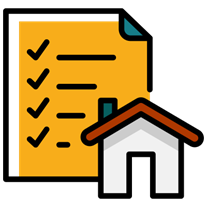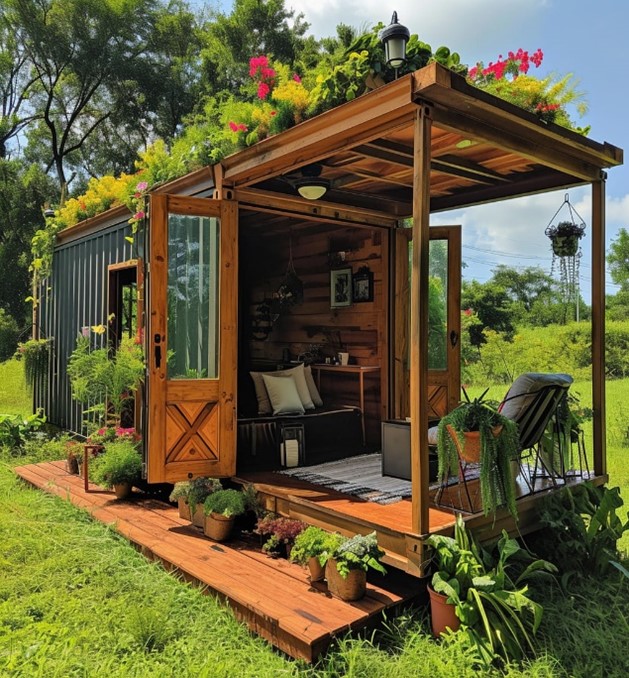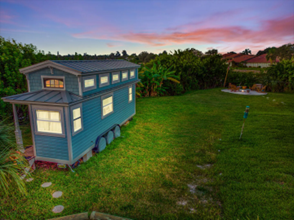10 Jun From Tiny Home to Money in the Bank: Your Path to Profitability
Transforming a tiny home into an income-generating investment property can be a smart move, especially considering the growing interest in minimalist living and the potential for high rental demand.
Here are some things to consider before you start your investment adventure.
Assess Your Tiny Home’s Potential
Evaluate if your tiny home meets the criteria that attract renters, such as location, amenities, and design. What is appealing about your location? Depending on if your rental will be short or long term will help determine the potential and beefing up your listing. If short term, are you in a popular vacation area? Are you near any beaches or attractions? If long term, are you near shopping, restaurants and schools?

Understand the Market
Research the rental market for tiny homes in your area. Look at factors like pricing, occupancy rates, and seasonal trends.
Identify Your Target Market
Determine who your ideal renters or guests will be. Are you targeting vacationers, long-term renters, or digital nomads? Understanding your market will shape your property’s design and marketing strategy.
Legal Considerations
Research local zoning laws and regulations regarding short-term rentals or running a business from your property. Ensure compliance with permits, licenses, and taxes.
Optimize Space
Make the most of your tiny home’s layout by maximizing functionality and comfort. Consider multifunctional furniture, storage solutions, and space-saving appliances to create a comfortable living environment.
Aesthetic Appeal
Invest in quality finishes, decor, and furnishings to enhance the appeal of your tiny home. A well-designed space will attract more guests and command higher rental rates.

Listing Platforms
Utilize online platforms such as Airbnb, Vrbo, or Booking.com to advertise your property. Create an enticing listing with high-quality photos, detailed descriptions, and competitive pricing.
Marketing Strategy
Develop a marketing strategy to promote your tiny home and reach your target audience. Utilize social media, email marketing, and local networking to increase visibility and attract guests.
Guest Experience
Prioritize the guest experience by providing excellent customer service, amenities, and personalized touches. Positive reviews and word-of-mouth recommendations will help drive bookings and repeat guests.

Maintenance and Cleaning
Establish a regular maintenance schedule to keep your property in top condition. Hire reliable cleaners to ensure thorough cleaning between guests and maintain high cleanliness standards.
Financial Management
Keep track of expenses, rental income, and taxes associated with your investment property. Consider hiring a property manager or using property management software to streamline operations and maximize profitability.
Insurance and Liability - Protect Your Asset
One often-overlooked aspect of renting out a property is the insurance. For tiny homes, this becomes even more intricate.
Rental Insurance Standard homeowner’s insurance might not cover rentals. Consider policies tailored for short-term rentals.
Liability Insurance Protects against potential lawsuits from renters in case of accidents.
This is a very important one. It’s not just about protecting your property, but also yourself from unforeseen liabilities.
Continuous Improvement
Stay updated on market trends and guest preferences to make informed decisions about your property. Continuously seek feedback from guests and implement improvements to enhance the overall guest experience.
Cheaper Utilities: Tiny Homes are known to have less utility usage, which can save investors, owners, or renters money in the long run.
Minimize Ecological Footprint: Not surprisingly, tiny homes are associated with a more environmentally friendly way of life. From the small size to low upkeep, tiny homes aim to minimize their own ecological impact.
Occasional Location Flexibility: If you opt for a mobile tiny home, the location can change over time. This flexibility can be an interesting addition to any real estate portfolio.

By following these steps and staying proactive in managing your tiny home investment property, you can generate a steady income stream while providing a memorable experience for your guests.
Remember, the key to success is creating a space that stands out in the market and provides a unique and enjoyable experience for your guests. Happy investing!

Sorry, the comment form is closed at this time.